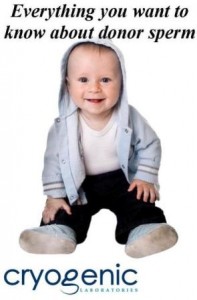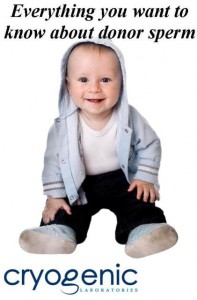Written by Fairfax Cryobank Laboratory Director, Michelle Ottey, PhD.
One of the frequently asked questions of our client services representatives is, “how old is my donor?” Our sperm bank does not provide the date of birth or specific age of our donors to the patients. A date of birth is identifying information and we work to ensure the confidentiality of the donor identities. All of our donors are between the ages of 18 and 39 when donating. We follow this guideline based on the American Association of Tissue Banking (AATB) Standards because we are an AATB accredited Sperm Bank. Several other regulating agencies require this age range for sperm donation as well, such as NY State.
Various researchers have published data over the years that suggest that genetic defects in the sperm increase with age in men. This could lead to decreased fertility, increased chance of miscarriage and increased risk of some birth defects. Most of these adverse effects of age are found once the male reached middle age. (Relationship between advanced paternal age and male fertility highlights an impending paradigm shift in reproductive biology. Editorial in Press Jason R. Kovac, M.D., Ph.D., Ryan P. Smith, M.D., Larry I. Lipshultz, M.D., Scott Department of Urology, Baylor College of Medicine, Houston, Texas. Fertility and Sterility April 26, 2013)
 Many people assume that all sperm donors are college age men. This is a misconception. Though about 20% of our sperm donors are college age, the majority (60%) are 21-29.
Many people assume that all sperm donors are college age men. This is a misconception. Though about 20% of our sperm donors are college age, the majority (60%) are 21-29.





